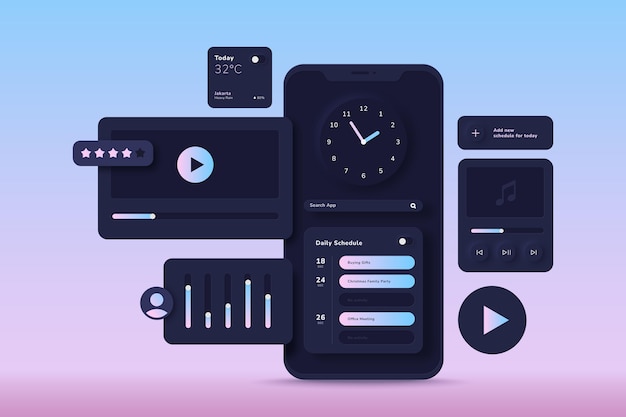
Dark mode design has evolved beyond a mere aesthetic choice, transcending its initial appeal of a sleek and modern look. It has become a functional and user-centric feature that caters to various aspects of usability, user experience, and even health considerations.
One of the primary advantages of dark mode is its impact on eye strain and fatigue. Traditional light interfaces can be harsh on the eyes, especially in low-light conditions. Dark mode, with its subdued color palette, reduces the contrast between the screen and its surroundings, providing a more comfortable viewing experience. This is particularly beneficial during nighttime or in dimly lit environments, promoting prolonged engagement without causing discomfort or visual stress.
Moreover, dark mode aligns with the current trend of increased screen time. As individuals spend more hours on digital devices, concerns about digital eye strain and fatigue have risen. Dark mode addresses this by minimizing the amount of light emitted, resulting in less eye strain over extended usage periods. This consideration for user well-being positions dark mode as a thoughtful and health-conscious design choice.
Accessibility is another significant aspect where dark mode excels. For users with certain visual impairments or sensitivity to bright light, dark mode can enhance readability and make content more discernible. The contrast between text and background is often more pronounced in dark mode, facilitating better visibility for individuals with visual challenges.
In addition to its health and accessibility benefits, dark mode can contribute to energy efficiency, especially for devices with OLED or AMOLED screens. These display technologies illuminate individual pixels, and dark mode utilizes fewer illuminated pixels compared to a bright interface. As a result, dark mode can potentially conserve battery life, extending the usability of mobile devices and reducing the environmental impact.
Beyond the technical advantages, dark mode has become a design element that enhances the overall aesthetic appeal of applications and websites. Its sleek and sophisticated appearance has garnered widespread popularity, influencing user preferences and expectations. Developers and designers now consider dark mode as an integral part of their design language, shaping the visual identity of their products.
Furthermore, dark mode has psychological implications, creating a sense of focus and reducing distractions. The subdued color scheme can contribute to a more immersive experience, allowing users to concentrate on content without unnecessary visual noise. This aspect aligns with the growing emphasis on mindful and intentional design practices.
In summary, dark mode has evolved into a multifaceted design choice that extends beyond its initial allure. Its impact on user health, accessibility, energy efficiency, and aesthetics has made it an essential consideration for designers and developers. As technology continues to advance, dark mode is likely to remain a pivotal aspect of user interface design, contributing to a more comfortable, accessible, and visually pleasing digital landscape.